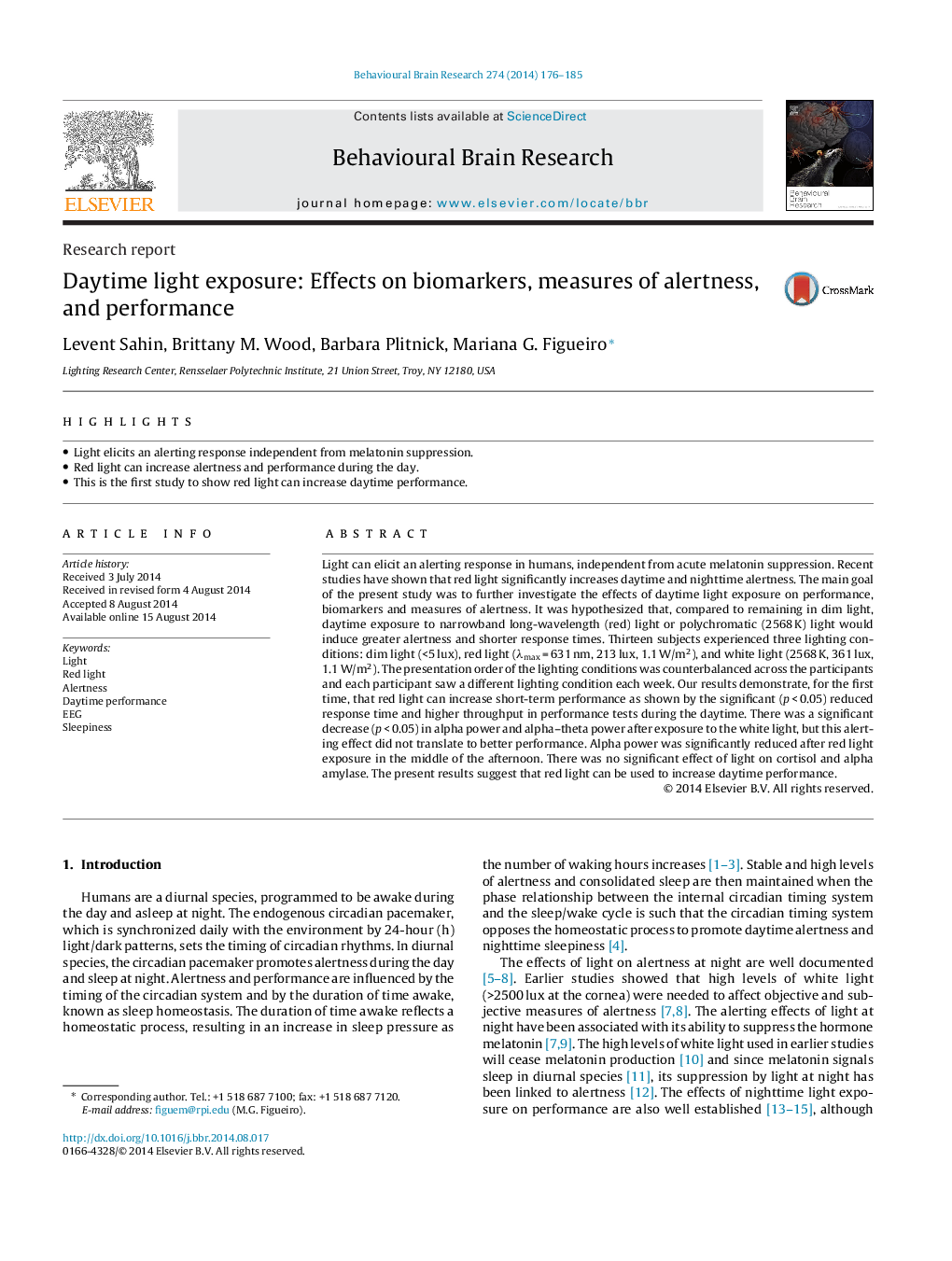| کد مقاله | کد نشریه | سال انتشار | مقاله انگلیسی | نسخه تمام متن |
|---|---|---|---|---|
| 6257737 | 1612958 | 2014 | 10 صفحه PDF | دانلود رایگان |
- Light elicits an alerting response independent from melatonin suppression.
- Red light can increase alertness and performance during the day.
- This is the first study to show red light can increase daytime performance.
Light can elicit an alerting response in humans, independent from acute melatonin suppression. Recent studies have shown that red light significantly increases daytime and nighttime alertness. The main goal of the present study was to further investigate the effects of daytime light exposure on performance, biomarkers and measures of alertness. It was hypothesized that, compared to remaining in dim light, daytime exposure to narrowband long-wavelength (red) light or polychromatic (2568 K) light would induce greater alertness and shorter response times. Thirteen subjects experienced three lighting conditions: dim light (<5 lux), red light (λmax = 631 nm, 213 lux, 1.1 W/m2), and white light (2568 K, 361 lux, 1.1 W/m2). The presentation order of the lighting conditions was counterbalanced across the participants and each participant saw a different lighting condition each week. Our results demonstrate, for the first time, that red light can increase short-term performance as shown by the significant (p < 0.05) reduced response time and higher throughput in performance tests during the daytime. There was a significant decrease (p < 0.05) in alpha power and alpha-theta power after exposure to the white light, but this alerting effect did not translate to better performance. Alpha power was significantly reduced after red light exposure in the middle of the afternoon. There was no significant effect of light on cortisol and alpha amylase. The present results suggest that red light can be used to increase daytime performance.
Journal: Behavioural Brain Research - Volume 274, 1 November 2014, Pages 176-185
